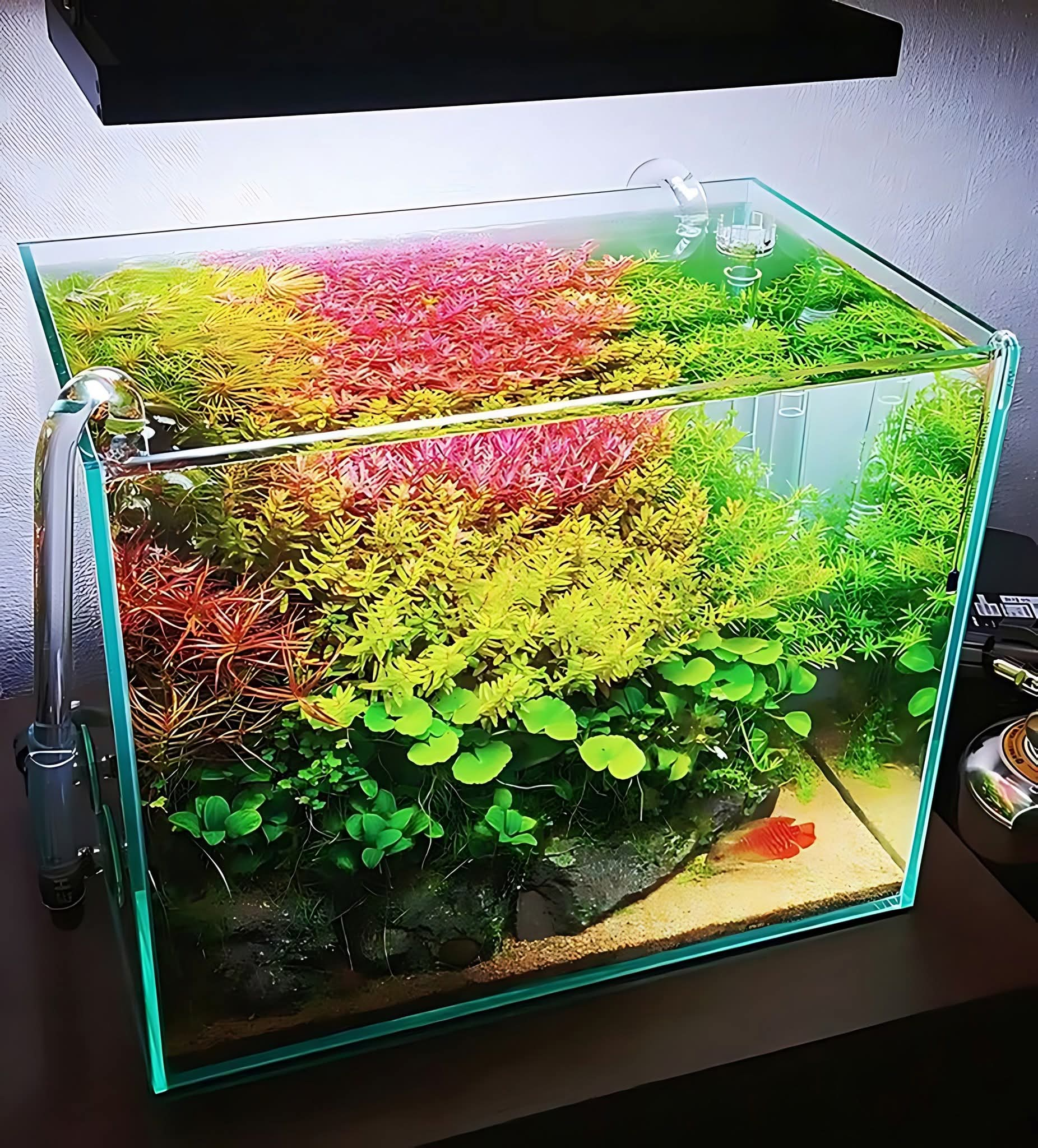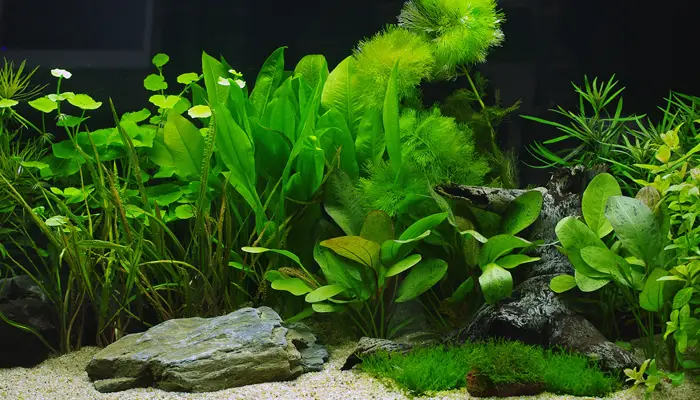🧠 Aquarium Algae Control through Nutrient & CO₂ Balance By ProHobby™ | Delhi NCR’s Aquarium Experts
Learn how nutrient dosing, CO₂, and light balance impact plant growth and algae in aquariums. Expert advice from ProHobby™ for healthy, stable planted tanks.
🌾 The Silent Tug-of-War in Every Planted Tank
Every aquascape — from a simple low-tech setup to a full ADA-style CO₂ tank — runs on one principle:
Plants, algae, and bacteria are in constant competition for the same resources — light, nutrients, and carbon.
A thriving planted aquarium happens when plants consistently outcompete algae for these resources.
At ProHobby™, our setups are designed around this balance — not just adding fertilizers or CO₂, but maintaining a stable, self-sustaining nutrient ecosystem.
🔬 Understanding the Triangle of Growth: Light • CO₂ • Nutrients
1️⃣ Light — The Energy Source
- Light drives photosynthesis.
- Too much light without matching nutrients = algae bloom.
- Too little light = weak plants, melting leaves, poor color.
Ideal PAR (Photosynthetic Active Radiation):
| Tank Type | PAR Range | Duration |
| Low-tech / No CO₂ | 20–40 µmol/m²/s | 6–8 hours |
| Medium / Liquid CO₂ | 40–60 µmol/m²/s | 7–8 hours |
| High-tech / Pressurized CO₂ | 60–90 µmol/m²/s | 8–9 hours |
2️⃣ CO₂ — The Growth Accelerator
- Plants need carbon to photosynthesize — CO₂ provides that.
- In non-CO₂ tanks, carbon comes from organic decay and surface exchange, limiting growth speed.
- In injected setups, stable 20–30 ppm CO₂ allows dense plant mass and coloration.
Signs of Low CO₂:
- Gaps in pearling during light hours
- Yellow or twisted new leaves
- Stunted growth despite good lighting
Tip: Always use a drop checker or CO₂ monitor to keep levels consistent — not just high.
3️⃣ Nutrients — The Building Blocks
Plants require macronutrients (N, P, K) and micronutrients (Fe, Mn, Zn, B, Cu, Mo).
Macro roles:
- N (Nitrogen): leaf growth, chlorophyll
- P (Phosphorus): root strength, DNA synthesis
- K (Potassium): nutrient transport, disease resistance
Micro roles:
- Fe: coloration, chloroplast health
- Mn, Zn, B, Mo: enzyme functions
When any one element is missing, algae move in to exploit the imbalance.
⚖️ The Balance Equation — Why Algae Appears
Algae = imbalance + excess light
It’s not about “too much fertilizer” — it’s about unbalanced input relative to plant uptake and CO₂ stability.
| Cause | Resulting Algae Type |
| Too much light, low CO₂ | Hair / Thread algae |
| Ammonia spikes | Green water, diatoms |
| Phosphate imbalance | Green spot algae |
| Old substrate, poor flow | BGA (cyanobacteria) |
| Iron overdose | Staghorn algae |
| Inconsistent CO₂ | Black beard algae |
Pro Insight: Most algae problems are CO₂-related, not fertilizer-related.
🌿 ProHobby™’s Nutrient Balancing Framework
We follow a 3-step model for stable growth in all ProHobby™ installations:
🧩 Step 1 — Define Light Intensity
Start with measured PAR (lux meters or manufacturer data). Adjust duration before increasing CO₂ or fertilizers.
🧩 Step 2 — Stabilize CO₂ First
Consistency matters more than ppm count. Keep drop checker lime green throughout the photoperiod.
🧩 Step 3 — Dose Balanced Nutrients
Follow Estimative Index (EI) or Lean Dosing based on tank type.
| Setup | Dosing Strategy | Frequency |
| Low-tech / No CO₂ | Lean (1/10th EI) | 1–2× per week |
| Mid-tech / Liquid CO₂ | Moderate (1/4th EI) | Alternate days |
| High-tech / CO₂ Injection | Full EI | Daily micro + macro |
Root tabs help root-feeders (Crypts, Echinodorus), while liquid ferts nourish stems and floaters.
💧 Delhi NCR Water Chemistry — Local Advice
Delhi’s tap water is hard and alkaline (pH 7.8–8.4, GH/KH high) — this directly affects nutrient solubility and CO₂ stability.
ProHobby™ recommends:
- EDDHA chelated iron (Fe-EDDHA) for high pH tanks
- Using reverse osmosis (RO) water blend (50:50) for sensitive plants
- Avoiding excessive potassium dosing — it accumulates faster in hard water
Pro Tip: Better still. Play it safe. Go with ProHobby’s custom fertilizer range for low-tech and high-tech tanks tailored for Delhi NCR water.
🔁 Maintenance for Long-Term Balance
- 50% water change weekly (removes excess nutrients).
- Clean filter media monthly (maintain bio balance).
- Dose macros after water change, micros the next day.
- Adjust lighting every 2–3 months as plant density increases.
- Never skip CO₂ for more than a few hours — stability > strength.
🧠 Common Myths (Busted)
❌ “Fertilizers cause algae.”
→ Algae is caused by imbalances, not nutrients themselves.
❌ “More CO₂ means faster growth.”
→ Not if light or nutrients can’t keep up — imbalance again.
❌ “Iron turns water green.”
→ Only if overdosed or unchelated in high pH conditions.
❌ “Daily dosing is too much for beginners.”
→ Consistency prevents swings — even small daily doses are safer than weekly surges.
🌍 ProHobby™’s Approach to Balanced Growth
Whether it’s a CO₂-powered aquascape in Gurgaon, a biotope setup in Noida, or a low-tech tank in Dwarka, our systems are custom-tuned for stability and low maintenance.
We engineer:
- Optimal CO₂ diffusion systems
- Tailored fertilization plans (water coulumn + root-based)
- Light intensity calibration
- Long-term algae prevention strategies
Because real plant health isn’t about speed — it’s about sustainability.
💡Want to go deeper?
Explore our advanced follow-up article:
Advanced Nutrient Dynamics & Carbon Chemistry in Planted Aquariums →
Learn how chelation, ion balance, and CO₂ equilibrium shape long-term stability in high-tech planted setups.
📍 ProHobby™
Plot No. 154, Nanda Enclave, Gali No. 2, Ch Nanda Singh Marg, Ambarhai, Sector 19, Dwarka, New Delhi – 110075
📞 8130316186
🌐 www.prohobby.in


